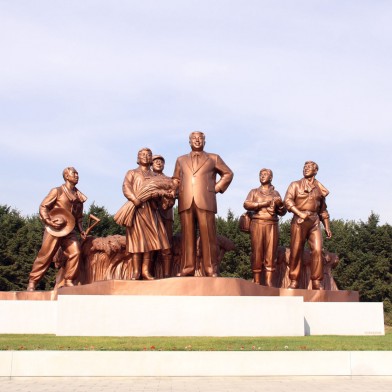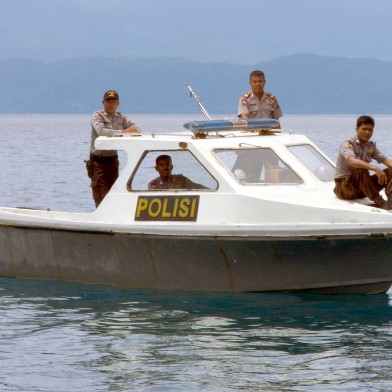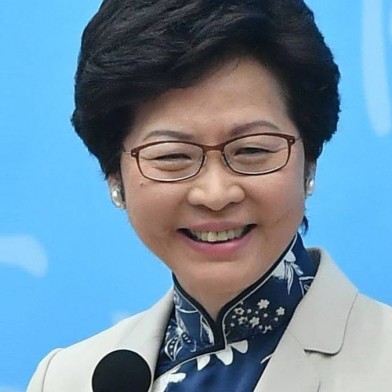Labour and NZ First are back in government for the first time since 2008, and Winston Peters is once again New Zealand’s Minister of Foreign Affairs.
With the Asia-Pacific Economic Cooperation meeting and the East Asia Summit approaching, the Asia Media Centre takes a look at some of the things that have changed in the region since 2008.
1. China’s power has grown

China has become the second-largest world economy, since overtaking Japan in 2011. It also holds increasing power in the global political order.
“China is closing the gap on the US in terms of overall influence in Asia," says Victoria University of Wellington Professor Robert Ayson. “One of the ways it is doing that is translating its economic power into political and diplomatic and security influence.”
Chinese President Xi Jinping, who assumed office in 2013, is one of the most powerful leaders in China in decades.
During President Xi Jinping’s 3.5-hour opening speech at last week’s 19th National Party Congress of China’s Communist Party, he said China should take centre stage in the world. Xi made repeated references to China’s “great power”, “strong power” and a “new era”. He also highlighted the Belt and Road Initiative, an ambitious development project that is becoming the framework on which much of China’s external engagement now hangs.
This week, the “Xi Jinping Thought for the New Era of Socialism With Chinese Special Characteristics” was added to the Chinese Communist Party’s Constitution, giving Xi the same status as Mao Zedong and Deng Xiaoping.
2. Mobile tech has revolutionised communication in Asia

Photo: 123RF
Several social media and instant messaging platforms have emerged since 2008, changing the way people communicate in Asia.
In China, WeChat (Weixin) is known as an "app for everything" – apart from instant messaging and social networking, users are able to pay their bills, do online banking, register for medical appointments, book a cab ride, and pay traffic fines, among a host of other services, on WeChat.
Released by media giant Tencent in 2011, WeChat has grown quickly, with some 960 million monthly active users as at the second quarter of 2017.
Elsewhere in Asia, WhatsApp and LINE dominate.
WhatsApp, launched in 2009, is most widely used in India and Southeast Asia. The app had 1.3 billion monthly active users as at July 2017, up from 1 billion in February 2016. It was acquired by Facebook in 2014.
LINE is one of Japan's largest social apps, and is also popular in Taiwan, Thailand and Indonesia.
Access to data is emerging as a trade policy and market access issue.
3. More people have been moving between Asia and NZ
Short-term visitor numbers from Asia to New Zealand have doubled since 2008, reaching 920,784 in the year ended December 2016. Arrivals from China have increased 263 percent over that period, reaching 409,008 visitors in 2016.
In both 2008 and 2016, the top five source countries were China, Japan, South Korea, Singapore and India – but tourism from Southeast Asia has also increased.
Net permanent and long-term migration from Asia has increased by 112 percent, from 16,293 migrants in 2008 to 34,658 in 2016.
Meanwhile, Asia’s demography is changing, creating changing migration patterns within the region.
Ageing populations in Japan, China, Hong Kong, South Korea and Thailand are expected to impact on GDP growth in those countries, while youthful populations in other Southeast Asian and in South Asian countries are expected to boost their economic growth.
Read also: Projected Asian population in New Zealand in 2038 • Global demand for talent fuels rise in Vietnam's tech sector
4. Trade between Asia and NZ has increased

The value of New Zealand’s merchandise exports to Asia has grown 48 percent, from $14.8 billion in December 2008 to $21.9 billion in the September 2017 year. Imports have also increased in value, up from $20.9 billion to $24.6 billion over the same period.
Much of the trade increase has come from China, with exports quadrupling between 2007 and 2016.
New Zealand’s services trade with Asia has also grown, with tourism and international education becoming major exports.
Four extra FTAs with Asian countries have come into force since 2008:
- The New Zealand-Malaysia FTA;
- the New Zealand-Hong Kong, China Closer Economic Agreement;
- the ASEAN Australia New Zealand FTA; and
- the New Zealand-Korea FTA.
New Zealand has also signed an Economic Cooperation Agreement with Taiwan, and there have been 10 rounds of FTA negotiations with India (though none since 2015).
New Zealand is one of 16 countries involved in the Regional Comprehensive Economic Partnership negotiations, and has ratified the Trans-Pacific Partnership, which at present cannot be put into force due to the US withdrawal from the agreement.
Investment from Asia in New Zealand is growing – the share of Overseas Investment Office-approved investments from Asian countries doubled from 12 percent in the 2006-10 period to 25 percent in the 2011-15 period.
Read also: Road to NZ-India FTA a slow one • Report: Asian investment in NZ
5. An 'anti-democratic momentum' is shrouding the region

Photo: Graeme Acton
New Zealand's new coalition will face an Asia that in many areas has rising intolerance and violence against minorities, says Chris Wilson, University of Auckland senior lecturer in politics and international relations.
“In the most extreme example, ethnic cleansing, if not genocide, is ongoing in Myanmar. This displacement and the violence which it has caused will present a regional humanitarian, diplomatic and developmental crisis for years to come," says Wilson.
Less visible forms of oppression and intolerance have also increased, he says.
"In India, Muslims continue to face violence from Hindu nationalists. In Pakistan, Shia Muslims have faced a series of sectarian attacks. In Indonesia, for years one of Asia’s great democratic success stories, recent politicisation of prejudice against Chinese-Indonesians has led to extraordinarily large demonstrations and the ouster of the governor of Jakarta – a Christian Chinese-Indonesian.
“Underlying these developments has been a pendulum swing towards an authoritarianism which reigned supreme in the region just two decades ago. Many countries in Asia had recently seen a distinct move towards democracy and pluralism."
Yet in recent years this reform has stagnated, if not reversed, Wilson says. “Thailand is once again ruled by the military, Myanmar’s political liberalisation has become stuck on issues of nationalism and ongoing military power. The Philippines has elected a populist leader who has presided over a deadly campaign of vigilantism against claimed drug criminals that has taken the lives of 7,000 people since mid-2016. Democratic Indonesia retains authoritarian rule over the two provinces of Papua and West Papua from which foreign journalists and researchers are largely excluded, and where human rights abuse continue unchecked in the face of a low-level separatist insurgency."
The trend towards authoritarianism is not likely to fade soon, says Wilson.
“Given the current global context and the history of Asia it is unlikely that there will be a reversal of this anti-democratic momentum any time soon. The new coalition government faces a complicated and delicate Asian political context.”
Read also: The Philippines as the chair of ASEAN • Aries Arugay: 'NZ could play the moderate voice in the Asia-Pacific'
6. Asia’s security environment is changing

Photo: 123RF
Several significant changes have impacted on the region’s security since 2008, according to Professor Alex Tan of the University of Canterbury.
"China is much stronger after the global financial crisis of 2008 and more assertive," says Tan. "There are territorial issues in East China Sea as well as South China Sea that have become more of a flashpoint than before 2008.
"In response, neighbours have responded by either tying up with the US more closely, increasing defence spending, or – in the case of Japan – thinking of changing its [pacifist] constitution.
"North Korea has become more troublesome as the Six Party Talks [negotiations between China, Japan, North and South Korea, Russia and the United States] have ceased [in 2009]. The missile test and nuclear development have become more frequent and can lead to miscalculation and war in Northeast Asia.
"China has started to build islands in the South China Sea and could go on to mark its territorial waters in the sea itself.”
7. Asia is changing rapidly, but NZ's knowledge of the region remains limited
As Asia grows in importance, New Zealand faces challenges in engaging with the region.
According to the University of Canterbury’s Alex Tan, the challenges are regional and domestic.
"New Zealand is not thought of as a natural partner in Asia; that is, New Zealand is not really a known partner in the sense of politics," says Tan.
“On issues here, I think our engagement is quite limited and not diversified enough. We engage with Asia in limited things – normally with a trade emphasis and not much else. And even with trade, it is quite limited to agriculture and food. With that emphasis, Asia does not see us as more than that.”
Meanwhile, the Asia New Zealand Foundation’s Perceptions of Asia tracking survey continues to identify knowledge gaps: Two-thirds of New Zealanders say they know little or nothing about Asia, despite the fact that eight out of 10 recognise its economic and social importance.
Pip McLachlan, director of engagement and research at the Asia New Zealand Foundation, says New Zealand also faces challenges having its voice heard in an increasingly contested space.
“Nationalist and populist trends pose a challenge to regionalism," says McLachlan. "New Zealand relies on regionalism as a hook for our engagement into Asia; we can’t do this only bilaterally.”
– Asia Media Centre


